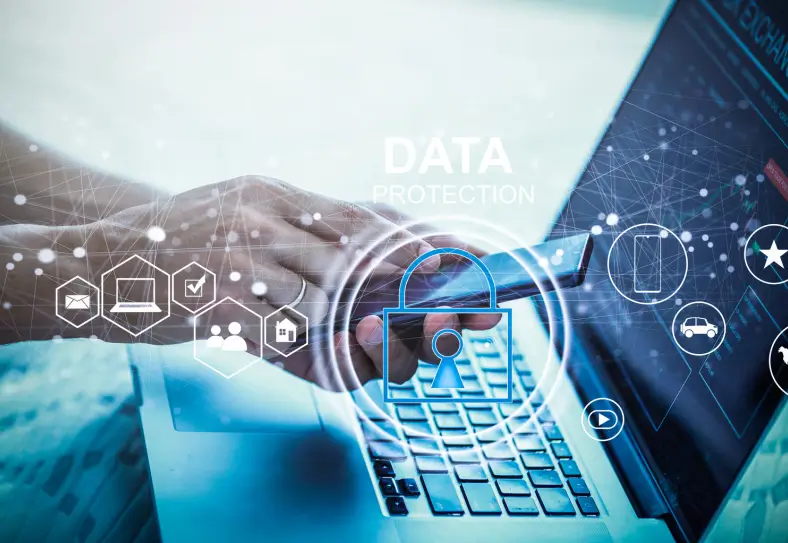Progressive Infotech (Workelevate) Recognized in the 2025 Gartner® Magic Quadrant™ for Digital Employee Experience Management Tools for the Second Consecutive Year
Threat Exposure Management (TEM) Services
Stay Ahead of Cyber Threats with Continuous Threat Exposure Management
As organizations expand their digital footprint across IT, OT, IoT, and cloud environments, their exposure to cyber risks increases significantly. Threat Exposure Management (TEM) is a proactive approach to identifying, prioritizing, and managing vulnerabilities and threats within an organization’s IT environment. By continuously monitoring the entire digital attack surface, TEM helps organizations reduce their risk of cyberattacks, strengthen their security posture, and achieve digital resilience.
What is Threat Exposure Management (TEM)?
Threat Exposure Management (TEM) is a comprehensive cybersecurity strategy that involves identifying, assessing, and managing risks across an organization’s digital ecosystem. TEM provides actionable visibility into security posture, helping organizations prevent attacks, prioritize vulnerabilities, and respond quickly to potential threats. This proactive approach ensures that businesses can stay ahead of cybercriminals while optimizing their security investments based on real-time threat intelligence.

Why is Continuous Threat Exposure Management Important?
Proactive Risk Reduction
Continuous TEM helps identify and mitigate the most significant cyber threats before they impact the organization.
Enhanced Security Posture
Regular monitoring and remediation ensure that vulnerabilities are addressed promptly, reducing the risk of successful cyberattacks.
Improved Resource Allocation
By prioritizing vulnerabilities based on risk, organizations can allocate resources effectively to maximize ROI.
Faster Recovery and Incident Response
A well-implemented TEM strategy enables rapid response to cyber incidents, minimizing business disruption and reputational damage.
Compliance and Trust
Ensure regulatory compliance and build trust with customers, partners, and stakeholders by maintaining a robust security posture.
Why is Continuous Threat Exposure Management Important?
Proactive Risk Reduction
Continuous TEM helps identify and mitigate the most significant cyber threats before they impact the organization.
Enhanced Security Posture
Regular monitoring and remediation ensure that vulnerabilities are addressed promptly, reducing the risk of successful cyberattacks.
Improved Resource Allocation
By prioritizing vulnerabilities based on risk, organizations can allocate resources effectively to maximize ROI.
Faster Recovery and Incident Response
A well-implemented TEM strategy enables rapid response to cyber incidents, minimizing business disruption and reputational damage.
Compliance and Trust
Ensure regulatory compliance and build trust with customers, partners, and stakeholders by maintaining a robust security posture.
Key Components of Threat Exposure Management
Continuous Monitoring
Regularly scans the organization's digital attack surface to detect vulnerabilities and assess risks, ensuring real-time visibility and rapid threat detection.
Vulnerability Prioritization
Not all vulnerabilities are equal. TEM prioritizes vulnerabilities based on their potential impact, exploitability, and relevance to the organization’s security posture.
Risk Management and Remediation
Develops targeted remediation strategies and leverages automation to efficiently address high-priority vulnerabilities, reducing overall risk exposure.
Threat Intelligence Integration
Incorporates up-to-date threat intelligence to anticipate potential threats, refine risk prioritization, and enhance security controls.
Communication and Collaboration
Ensures effective communication with stakeholders across the organization, fostering a culture of cybersecurity awareness and collaboration.
Advanced Threat Detection and Response
Utilizes advanced tools like Security Information and Event Management (SIEM) and Threat Intelligence Platforms (TIP) to detect and respond to sophisticated threats, ensuring a swift and effective incident response.
Solution, Features and Functionality
Cyber Risk Quantification and Mitigation : Quantify cyber risks to prioritize remediation activities and minimize potential impacts.
Asset Discovery and Management : Gain visibility into both known and unknown environments, focusing on internet-facing infrastructure to identify hidden vulnerabilities.
Comprehensive Reporting : Provide metrics-based executive reports that offer insights into security posture, enabling continuous improvement and strategic planning.
Custom Integration and Automation : Leverage automation to streamline threat detection, response, and remediation workflows, improving efficiency and resilience.

Benefits of Progressive’s Threat Exposure Management Services
Prevent Cyber Attacks : Proactively identify and mitigate vulnerabilities to prevent potential breaches.
Foster a Security-First Culture : Encourage collaboration and communication across departments to build a security-aware culture.
Accelerate Recovery : Enable rapid recovery from incidents with well-defined response strategies and threat detection capabilities.
Ensure Regulatory Compliance : Align with industry regulations and standards to avoid costly fines and maintain customer trust.
Informed Decision-Making : Utilize real-time threat intelligence to make data-driven security decisions and optimize resource allocation.

